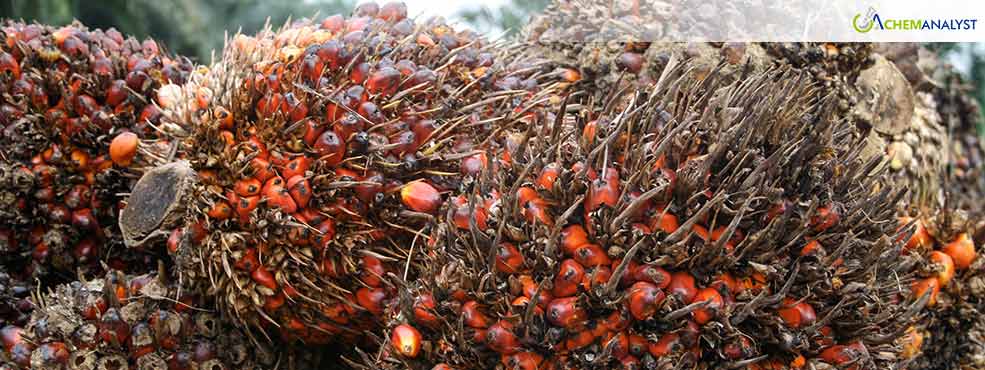Welcome To ChemAnalyst

Malaysian palm oil prices spiked in early July 2025 as supplies were tight, exports were firm, and monsoon disruptions at major producing states raised concerns. Softening ringgit contributed to worldwide demand. New American tariffs on derivatives of palm oil are, however, already inducing the industry to diversify market exports and invest in value-added, sustainable palm oil production. With government support and innovation in downstream sectors, Malaysia aims to boost global competitiveness and deal with trade challenges, keeping the outlook of the CPO market favorable for Q3 2025.
Malaysia's palm oil industry started July in a good mood, as prices sustained their wave of ascendancy thanks to domestic and external factors. Benchmark crude palm oil (CPO) futures in the Bursa Malaysia Derivatives Exchange gained in early July trading, propelled by depleting inventories, robust export numbers, and hopes for sustained tariff wars with the US.
Palm oil prices went on to rise aggressively, topping crucial psychological levels as buyers rushed to secure supplies amid tensions surrounding curtailed shipments and geopolitical tensions. The upbeat trend, supported by under-forecast palm oil output and firm demand from major importers like India, the Middle East, and the EU. Market observers attribute the first July rally to seasonal and strategic factors. Disruptions in monsoonal weather in Sabah and Sarawak's key plantation regions have brought harvesting operations to a stop, tightening near-term supplies. At the same time, the depreciating ringgit has been making Malaysian palm oil cheaper to consumers worldwide, attracting firm demand from price-sensitive buyers. Export sales during the first half of July are said to be up double digits compared to last month, with refined palm olein and industrial fractions particularly strong on bookings.
But behind the price optimism lies a sophisticated geopolitical dilemma: the imposition of new tariffs by the United States on oleochemicals derived from palm and their derivatives based on sustainability and labor issues. The new policy, which was rolled out in late June, has the potential to soften US demand for palm oil in the long term and rattle Malaysian exporters who bank on value-added palm-based exports that encompass the palm oil. In turn, Malaysia's palm oil industry is stepping up its diversification plan—both geographically and by products. Exporters are searching for alternative markets in Central Asia, Africa, and Latin America to make up for any reduction from the US. Upstream players are also investing in RSPO-certified production and traceability platforms to prove compliance with international ESG standards, thus protecting access to Western markets.
Downstream innovation is also in the sights of industry players. From sustainable packaging resins to palm-based pharmaceuticals and cosmetics, Malaysia is spearheading value-added diversification to shield it from commodity price volatility and trade restriction. The government has pledged its commitment again, announcing a RM 500 million (~USD 117.5 mil) innovation fund for sustainable palm technology development.
As the month of July goes by, sentiment in the palm oil market remains optimistic yet cautious. With ongoing weather interruptions and favorable trade patterns, prices of Malaysian CPO should continue to ride the upswing during Q3 2025. However, the dynamic tariff scenario calls for flexible strategies and cross-border coordination to keep the industry resilient, sustainable, and competitive in a global interdependent economy.
We use cookies to deliver the best possible experience on our website. To learn more, visit our Privacy Policy. By continuing to use this site or by closing this box, you consent to our use of cookies. More info.
